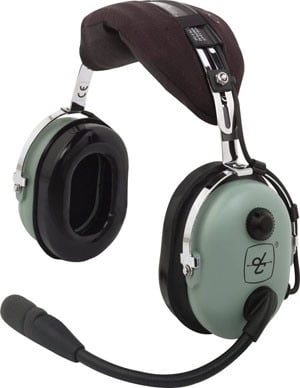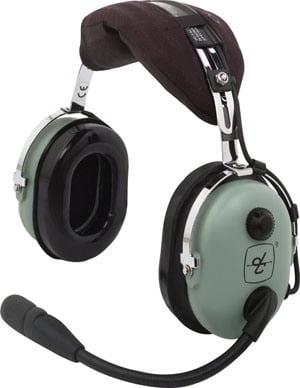If you’ve been in the aviation game a while, then the chances are that you’ve heard of David Clark. One of the leading names in the industry, David Clark introduced its first noise-attenuating headset into the wild back in 1975. Since then the company has worked hard a producing a range of quality aviation headsets available for a wide audience. So, whether you’re a novice flyer, a seasoned pilot, or a passenger, you can be sure that David Clark has a headset to suit.
In this article we’ll take a closer look at three of the company’s top selling headsets. We’ll note all the main feature and functions they have to offer and compare and contrast between them, so ultimately you can see which is going to be the best buy for you.
David Clark H10-30 Aviation Headset
This is the most basic of all three headsets. But don’t let that deter you as it still has a great deal to offer in terms of both quality and functionality.
In terms of comfort, the H10-30 Aviation Headset is very heavily padded both around the ear cups and on the headband. While the gel ear seals ensure a comfortable yet cozy fit. It was made in the USA using high-quality materials and durable electrical components which are guaranteed to keep going for a number of years, problem-free.
The noise reduction rating (NRR) is a decent 24dB and it features an M-7/DC electret noise-cancelling microphonethat works well, providing a clear level of communication.
One downside of the headset is that it’s mono audio only. And while this might not be an issue for a lot of people who are just intending to talk through the headset, anyone looking to listen to music may want to consider a different model.
So, as you can see, the features on this headset are pretty good, but it leaves a lot to be desired in terms of looks, especially with its pale green tinge and the microphone’schunky metal arm.
Keep reading to see what the next model up has to offer.
David Clark H10-13.4 Aviation Headset
Following on from the same basic design as the H10-30, the H10-13.4 headset is also a very comfy piece of equipment that hugs you just right. Being made in the same USA-based factory as the H10-30, it’s equipped with the same high-quality gel ear seals and foam head pads designed to ensure an even distribution of pressure.
When it comes to noise reduction, the H10-13.4 headset actually took a slight downturn from that of the H10-30 headset. So instead of an NRR of 24dB, you get an NRR of 23dB with this model, which is still pretty effective, none-the-less. And like the H10-30 headset, this model is also mono audio only.
The major upgrade this headset did get is in connection with the microphone. No longer is there a metal arm holding the mic in place. Instead, there is a sleek black arm which locks the mic into place at a position that’s comfortable to you.
And it’s not just the looks of the microphone that got upgraded. The quality level was boosted as well. The H10-13.4 headset features a M-7A microphone, which is the company’s most advanced noise-cancelling microphone.
If you do feel the need to modify your headset or in rare event you need to carry out a home repair, the headset comes with a construction guide and electrical diagrams to help.
David Clark H10-13S Aviation Headset
Pretty much the exact same model as the H10-13.4, but with a couple of key difference to note. They both feature the same great level of comfort you’ve come to expect of a David Clark headset, and both feature pretty much the same design, at least aesthetically anyway.
Both models feature the flex boom microphone offering superb, clear communications at all times. And both, have a NRR of 23dB.
The first is that the H10-13S has dual volume controls to enable you to adjust the volume of each ear independently, whereas the H10-13.4 just has a single volume control feature.
The second major difference is the H10-13S is the Stereo version. What this means essentially is that it provides stereo music separation when connected to some form of music source. To activate this mode, simply use the mono/stereo switch located on the side of the headset.
Recommendation
All three models are durable and made using high-quality components.Each of them is really comfortable to wear even at extended periods of time. And all three, are great value for money.
The H10-30 is the base model headset, but it provides enough functionality for most entry-level pilots or passengers to be pleased with. The NRR is very good and it’s a very comfortable headset to wear.
Moving on to the next two models. There isn’t really a whole lot of difference between the H10-13.4 and the H10-13S, but then there’s not a huge difference in the price either. While the H10-13.4 headset follows in the same step as the H10-30 headset in terms of being mono only, the H10-13S gives you a stereo function as well. Which is a nice added touch for anyone who likes to listen to music while they fly. It’s also pretty handy having dual volume controls.
Even though it lacks some of the more modern features such as electric or digital noise reduction, the David Clark H10-13.4 Aviation Headset still one of the best of its kind and is excellent value for money. But, if you’re happy to spend just a fraction more, the H10-13S is the better option as you’re getting two great added extras at a very low cost.


